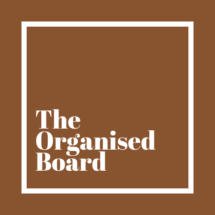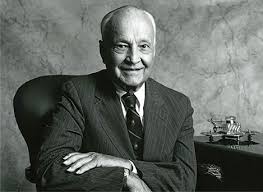Board Meeting Coordination

Coordinating a board meeting is much more than what happens in the room on the day of the meeting.
A successful board meeting involves planning, collaborating and understanding how to get the best out of your Board members, in the nicest possible way.
To the outsider board meetings should be routine and seamless. Set the date, send meeting papers to directors and arrange travel.
Who does what?
Unless your organisation has a dedicated Board Coordinator the role of organising the meetings logistics may fall on the CEO or CFO’s Executive Assistant, with guidance from the Company Secretary.
The Company Secretary has the overall responsibility for organising the Board meeting and relevant governance requirements.
The logistics are the responsibility of the Board Coordinator.

What is Board Coordination?
Board Coordination is pulling everything together. From issuing board packs to ensuring the air conditioning is working in the room. Everything needs to be thought through, tried and tested. The coordinator will deal with complex travel, technology, dietary requirements, individual preferences and personalities.
And if a mistake is made – there is no where to hide.
Disclaimer: Please note this article contains links to external parties, a summary is available at the bottom of the page for ease of reference. The links are for information only.
Board Coordination materials:
The Annual Agenda sets out what the board agree to consider and approve throughout the calendar year. The Board Charter should be used as a baseline when starting to build the Annual Agenda.
Agenda Items will include routine governance and regulatory requirements. Such as when the Annual General Meeting (AGM) is to be held, potential site visits or major project updates.
Setting the meeting dates should be bedded down one to two years in advance, if possible.
This is no quick or easy feat as many directors will sit on other boards you will be competing for their time. The earlier you can establish dates the more flexability you will have.
Once the board dates have been agreed to by the directors, they need to be communicated to the Executive so target dates can be set within the organisation. more information
Building the Board Meeting Agenda starts with the annual agenda and will include actions arising from previous meetings, input from the members of the board, executive and the CEO.
Once the draft agenda has been approved by the CEO, the Chairman has final approval of the agenda. more information
Once the Board agenda has been confirmed the Executive team will pull together the Board papers for the meeting. Having a standardised template is important to guide the teams to provide informative and succinct material for the directors to review.
The directors may be reviewing a 400 page board book. A good meeting template will guide the writer on how to bring the readers attention to the issue at hand without getting bogged down in the detail. more information
Board Meeting Minutes are a record of the meeting. They are written by the Company Secretary, approved by the Board, signed by the Chairman and become a company record.
I could write a book on the life cycle of minutes: Skeleton Minutes, Draft Minutes, Management Approved Minutes, Chairman Approved Minutes, Board Approved Minutes, Chairman signed Minutes, Amended Minutes, Searchable Minutes, Filed Minutes and Minute Extracts.
I’ll provide a step by step guide to
“Minutes are fun” – said nobody EVER.
Actions arising from a meeting can be minor or tilt an executive’s world.
The Company Secretary will send action items to the relevant party as soon as practical following a meeting.
The actions will be entered into an Action Log and will either be closed out prior to the meeting or possibly added to a future meeting agenda.
It is important that the actions are followed up and closed out as quickly as possible.
Having a long list of actions from a meeting brings no-one joy, but having no actions could signal that the board are not being attentive. more information
This can be complex, if no guidelines are in place.
If a director wishes to meet a member of the management team, this should be organised through the Board Coordinator.
If a member of the management team wishes to meet with a director, they should firstly seek approval from the CEO and then arrange the meeting via the Board Coordinator.
Directors should not be involved with the running of the organisation – that is what the CEO is employed to do.
If there is a problem with food and travel you will hear about.
As the directors are taken away from their families and their comfort zones and in many cases have difficult decisions to make, ensuring their preferred seat on a plane has been booked, their car transfer is there when required, their hotel preferences have been met AND they have a choice of the food they like is so very important.
Check check and check again. I have no issue asking someone to ‘sense check’ a two line email before hitting the send button.
You can look and look at a sentence and not see the glaring mistake. Irritatingly, it can give the recipient much joy to point out your errors.
When it comes to Board Papers, you don’t want the director distracted from the content of a paper by bad grammar and formatting.
Recommended Resource:

The Australian Institute of Company Directors (AICD) is an excellent resource for those wanting more information of what is required at board meetings. Below are links to free resources which I refer to often.
Director Tools
Annual board calendar
Board Charter
Annual General Meeting (AGM)
Board papers
Board minutes
What you need to know


